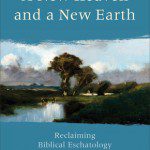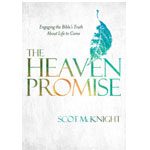 The Bible teaches that God governs the weather including the rain (image to the right from wikipedia). Many passages make this quite clear. Not only this he keeps rain, wind, snow and hail in his storehouses to be sent forth out of his bounty or wrath.
The Bible teaches that God governs the weather including the rain (image to the right from wikipedia). Many passages make this quite clear. Not only this he keeps rain, wind, snow and hail in his storehouses to be sent forth out of his bounty or wrath.
The LORD will open the heavens, the storehouse of his bounty, to send rain on your land in season and to bless all the work of your hands. You will lend to many nations but will borrow from none. Deut. 28:12
The LORD does whatever pleases him, in the heavens and on the earth, in the seas and all their depths. He makes clouds rise from the ends of the earth; he sends lightning with the rain and brings out the wind from his storehouses. Psalm 135:6-7
When he thunders, the waters in the heavens roar; he makes clouds rise from the ends of the earth. He sends lightning with the rain and brings out the wind from his storehouses. Jer 10:13, 51:16
The Lord asked Job …
Have you entered the storehouses of the snow or seen the storehouses of the hail, which I reserve for times of trouble, for days of war and battle? Job 38:22-23
The inspired writers of scripture had an understanding of weather that conflicts rather substantially with our modern understanding. We certainly agree that God is governs the weather, but must we accept the storehouse theory? Consider the following scenario:
What causes the rain? Most of us were taught that water evaporates from the ground level, rises to where the air is cooler, and condenses into water droplets that form clouds. We learned how cold fronts and warm fronts and low pressure systems bring rain. … Every year scientists develop increasingly accurate computer models of weather.
Now imagine that debates arise about what should be taught in schools about weather. Imagine that prominent scientists write popular books about meteorology that state, “From our scientific understanding of the causes of wind and rain, it is clear that no divine being controls the weather.” Imagine that a professional organization of science teachers writes a set of guidelines that state, “Students must learn that all weather phenomena follow from natural causes; weather is unguided and no divine action is involved.” Meanwhile, other people insist that these scientific explanations must be wrong because the Bible clearly teaches that God governs the weather. These people write books and give public speeches saying “Atheists invented their godless theories about evaporation and condensation. But we can prove that their so-called scientific theories are false and that the Bible is true.” They go to churches and teach, “If you believe what these scientists are saying about the causes of wind and rain, then you’ve abandoned belief in the Bible.” They petition school boards and courts to require that science classrooms also teach their “storehouses” theory of weather as an alternate explanation to evaporation and condensation.
Why don’t we have battles about the conflict between science and faith in the explanation of weather?
How would you respond to such a scenario?
What similarities or differences do you see with the debates over creation and evolution?
The above example comes from the introduction of Origins: Christian Perspectives on Creation, Evolution, and Intelligent Design by Deborah and Loren Haarsma, both Professors of Physics at Calvin College (p. 13-14). Deborah did her undergraduate work at Bethel in Minnesota (my alma mater as well) and her graduate work at MIT receiving her Ph.D. for research on galaxies and the expansion of the universe. Loren did his undergraduate work at Calvin and received his Ph.D. from Harvard and works in the area of neuroscience, looking at the way electrically signals are transmitted in cells. (My Ph.D., if you have any interest, is in Chemistry from UC Berkeley in the area of physical chemistry and molecular spectroscopy).
Most Christians, including me, have no trouble acknowledging that both science and the Bible are telling the truth when it comes to weather. God is sovereign over the weather – but we see no fundamental conflict between the scientific and biblical explanations. In fact, I rather expect most of us automatically classify the storehouse references as figurative language and/or poetic license. But it is not at all clear that the ancient authors did. Nonetheless we see no fundamental conflict between meteorology and faith.
The debates over creation, evolution, and intelligent design are in some ways similar to the example given above concerning weather, but they are also far more complicated and give rise to deeper emotional responses with more significant theological consequences – or at least so many think. The book by Deb and Loren Haarsma works through many of these questions and ideas in a clear and open fashion. This book is designed for individuals with questions, small groups, and adult education classes. From about this book (p. 14-15):
The purpose of this book is to lay out a wider variety of options and to examine what both the Bible and the natural world can teach us about these options. We will explore in depth the issues of origins and consider areas where Christians generally agree with each other and areas where Christians disagree. Our goal is not to convince you that one particular opinion must be correct, but neither will we merely list a wide variety of opinions without doing any analysis. We will
-> summarize what we believe God’s Word teaches about origins when it is studies using sound principles of interpretation.
-> summarize what we believe God’s world can reliably reveal about origins when it is studied using sound scientific methods.
-> distinguish between scientific theories that are well established and have a great deal of data supporting them and scientific theories that are more tentative and speculative.
-> look at the range of opinions that Christians hold about origins and discuss some of the pros and cons of each in the light of what we can learn from God’s Word and God’s world.
The book contains chapters with titles such as 1. Woldviews and Science, 5. Genesis: Concordist Interpretations, 6. Genesis: Non-concordist Interpretations, 10. Intelligent Design, 12. Adam and Eve … and more.
So what about Adam and Eve? We have looked at a number of books addressing the question of Adam and Eve over the last year or two. This is probably the most vexing and divisive question in the entire discussion of science and Christian faith. As a result this is a good place to stop and look at the approach taken by Deb and Loren. They discuss four common scenarios for Adam and Eve in Christian thought and look at the pros and cons of each. The views are those we have considered before: recent ancestors, recent representatives, a pair of ancient ancestors, a group of ancient representatives, and symbolic. The Haarsma’s discussion of these five views is framed in the context of both the scientific issues (fossil evidence, genetic similarity to animals, and genetic diversity in the human population) and the theological issues (Image of God, Human Soul, Original Sin, and Human Mortality before the Fall).
Adam and Eve as recent ancestors takes a literal view of Genesis 2-3, but is difficult to reconcile with the fossil evidence dating back over 10,000 years in North and South America, 30,000 years in Europe, and more than 100,000 years in Africa. Genetic evidence provides other conundrums – why do some genes have more than 150 alleles when an original pair would have been created with at most four? Why do humans have many of the same non-functional pseudogenes as chimps and other apes? And those two questions only expose the tip of a very large iceberg of genetic data. The appearance of age is a serious theological question raised by this approach – although it does provide satisfactory answers to other theological questions.
Adam and Eve as a pair of recent representatives suggests that God selected a pair out of the population of humans some 10,000 years ago and this pair was representative of all humanity. This scenario does not conflict with science because there is no way for science to say anything about a selectedness of specific pair. The sin of Adam is passed to all mankind not biologically but spiritually. This view has pros and cons and the Haarsmas work through a few of them. Although Deb and Loren don’t mention names it is perhaps worth mentioning a few here … John Stott, Denis Alexander, Henri Blocher, and Tim Keller are among those who lean toward this kind of view.
Adam and Eve as a pair of ancient ancestors selected some 150,000 years ago. This allows for a special act of God in producing this ancient pair, but adds difficulties with the necessary gaps in the genealogies in Genesis and is hard to reconcile with the genetic diversity of the human race. A variation on this approach suggests that Adam and Eve are the group of ancient ancestors at the population bottleneck some 150,000 years ago but this doesn’t remove all difficulties. (CS Lewis suggests something like this variation in The Problem of Pain).
Adam and Eve as a group of ancient representatives suggests that some 150,000 years ago God revealed himself to a group of humans who chose to sin. They mingled with the surrounding population and transmitted that sin to all. But this has many of the same problems as Adam and Eve as a pair of recent representatives.
Adam and Eve as symbolic can answer many of the questions and issues. The Haarsmas suggest that this view does not work well in explaining original sin as spiritual status because it requires a large number of independent acts. This view does not provide a single event in which humanity’s fellowship with God is broken. If this is an important part of our theology then any of the first four options are more satisfactory (although none are without shortcomings).
So where do Deb and Loren wind up?
Not Satisfied with Any of These Scenarios?
Neither are we! All of the Adam and Eve scenarios discussed in this chapter seem to have significant scientific or theological challenges or both. While you likely have disagreements with one or more of the views presented, it’s worth considering each one at least briefly. Don’t simply dismiss them for sounding “wrong” but figure out exactly which arguments you disagree with and why. If you get a chance, discuss these ideas with other Christians. Remember that proponents of each view can be working in good faith to reconcile God’s revelation in Scripture and in nature and to maintain certain central theological beliefs.
…
The church has work to do in this area. This work is not something to fear but rather is part of the church’s calling. (p. 270)
The Haarsma’s book finishes up with a chapter on frequently asked questions, including “How do I deal with disagreements about origins with my family and church members?” and “What should I teach my children?” and then a chapter on Wonder and Worship – always a good place to wind up.
Origins: Christian Perspectives on Creation, Evolution, and Intelligent Design is an excellent resource – and one I highly recommend. The book is designed to facilitate discussion. It is ideal for small groups or larger adult education classes. It should also be helpful for individuals with questions and concerns. Pastors or others with little background to frame a discussion of origins should find this book an excellent place to start. For those who wish to go deeper the Haarsma’s provide many references to assist.
What do you think? How can we start a profitable discussion on the issues of origins?
What would help in your church or with your friends and family?
If you wish to contact me directly, you may do so at rjs4mail[at]att.net
If interested you can subscribe to a full text feed of my posts at Musings on Science and Theology.











